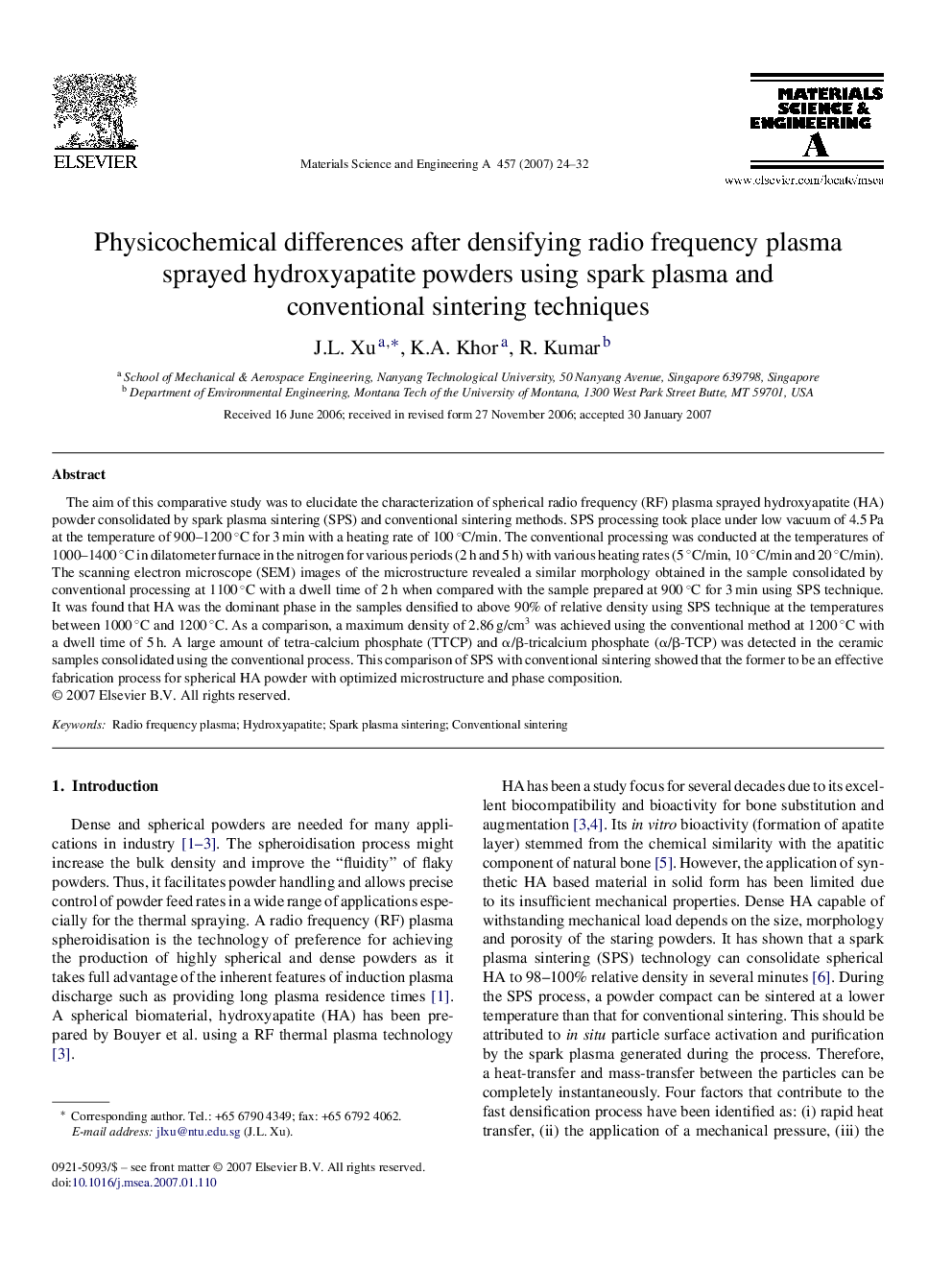| Article ID | Journal | Published Year | Pages | File Type |
|---|---|---|---|---|
| 1584170 | Materials Science and Engineering: A | 2007 | 9 Pages |
Abstract
The aim of this comparative study was to elucidate the characterization of spherical radio frequency (RF) plasma sprayed hydroxyapatite (HA) powder consolidated by spark plasma sintering (SPS) and conventional sintering methods. SPS processing took place under low vacuum of 4.5 Pa at the temperature of 900-1200 °C for 3 min with a heating rate of 100 °C/min. The conventional processing was conducted at the temperatures of 1000-1400 °C in dilatometer furnace in the nitrogen for various periods (2 h and 5 h) with various heating rates (5 °C/min, 10 °C/min and 20 °C/min). The scanning electron microscope (SEM) images of the microstructure revealed a similar morphology obtained in the sample consolidated by conventional processing at 1100 °C with a dwell time of 2 h when compared with the sample prepared at 900 °C for 3 min using SPS technique. It was found that HA was the dominant phase in the samples densified to above 90% of relative density using SPS technique at the temperatures between 1000 °C and 1200 °C. As a comparison, a maximum density of 2.86 g/cm3 was achieved using the conventional method at 1200 °C with a dwell time of 5 h. A large amount of tetra-calcium phosphate (TTCP) and α/β-tricalcium phosphate (α/β-TCP) was detected in the ceramic samples consolidated using the conventional process. This comparison of SPS with conventional sintering showed that the former to be an effective fabrication process for spherical HA powder with optimized microstructure and phase composition.
Related Topics
Physical Sciences and Engineering
Materials Science
Materials Science (General)
Authors
J.L. Xu, K.A. Khor, R. Kumar,
